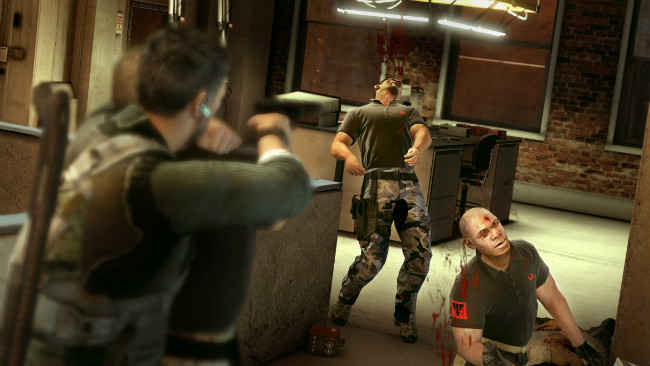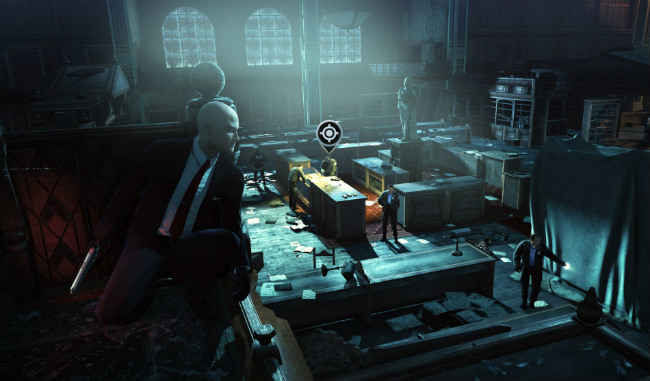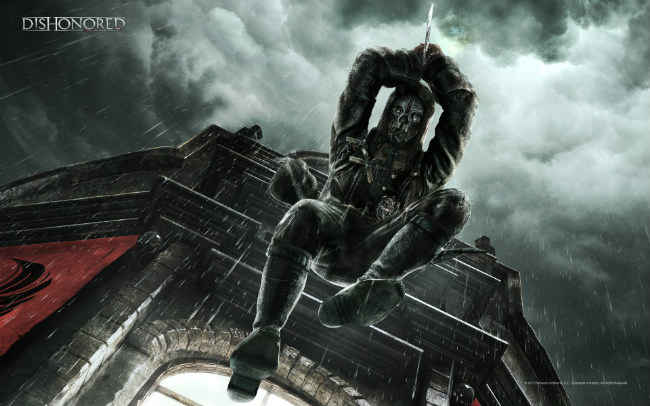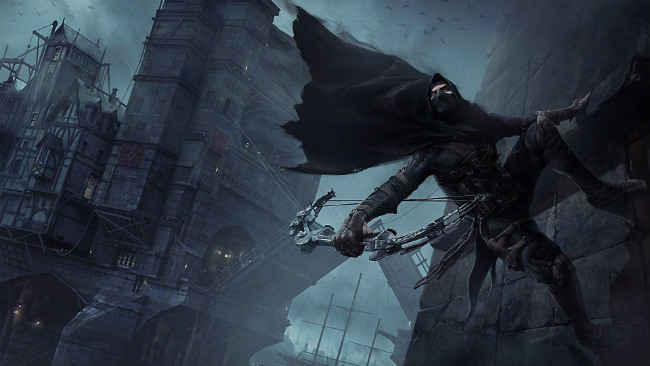Exit Light, Enter Night: A look at Stealth in games
A look at the evolution of stealth games from Metal Gear right up to the new Thief, and why the genre has so many gamers in its grasp.
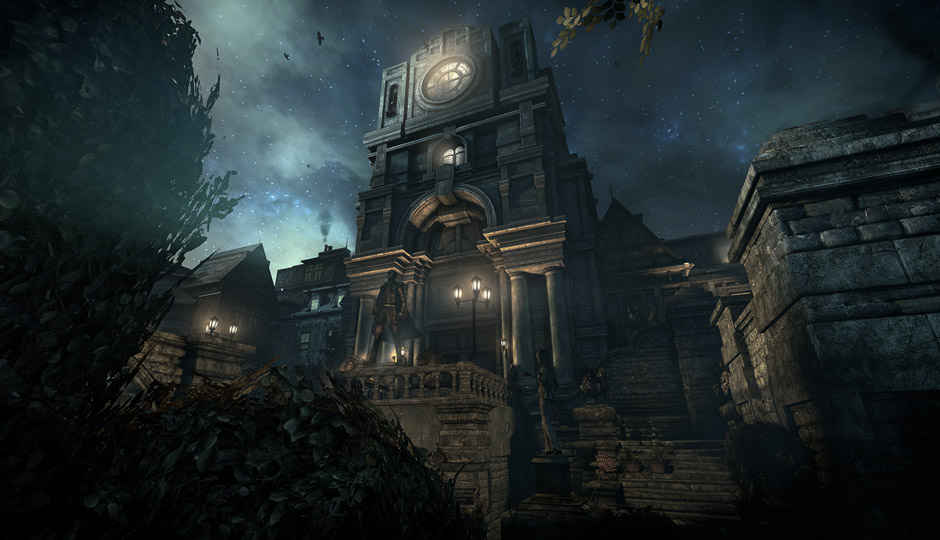
Stealth games are weird.
 Survey
SurveyInstead of empowering their players, like most other video games out there, stealth games ensure that the player is weak and barely able to survive combat. It seems strange that when the most recognizable element of video games is to rack up kills and points, there is a very popular subset of games where the primary objective is to stay away from combat and often times, not to kill anyone.
Like I said, stealth games are definitely weird.
However, you only have to play a couple of good stealth games to truly understand why the genre is so popular. Stealth games often offer the kind of tactical depth that most other games don’t. It’s just not enough to know where your enemies are, you need to know the environment, to know where your enemies are looking and the likely path you will need to take to either bypass them or subdue them without them knowing. Of course, this means that the AI (Artificial Intelligence) in these games needs to be good and more often than not, you’ll see that the enemy AI in stealth games is better than what you will see in most other games.
Today, stealth, like RPG, is a genre that has been co-opted by plenty of games that don’t belong to the genre but do rely quite a bit on stealth elements. Popular games like Tomb Raider, Far Cry 3 and the Batman Arkham games owe quite a bit to the stealth games that came before.
Which is a perfect segue for me to delve into the history of stealth video games.
The Classic Age of Stealth (Metal Gear, Castle Wolfenstein)
If you think about it, Pac-Man was a stealth game. You had to stay away from your enemies as they rushed through a maze trying to eat you, enemies that had an exact idea of where you were. However, if you’re looking for a ‘purer’ version of stealth, then one of the first full-fledged stealth titles was Castle Wolfenstein, released in 1981 for the Apple II and later ported to DOS. Unlike the games it would spawn in the future (classics like Wolfenstein 3D and Return to Castle Wolfenstein), the original Wolfenstein relied more on stealth tactics than actual action. These tactics included stealing uniforms from Nazi guards to fool your enemy or sneaking around more powerful soldiers. Like Pac-Man, the more advanced guards in Wolfenstein knew where you were and would move around the levels hunting you down. While Wolfenstein did not offer deep gameplay, the simple fact that it forced the player to consider running away or hiding as viable (and often necessary) tactics, makes it the grandfather of stealth games, similar to how one of its sequels Wolfenstein 3D, is considered to be the grandfather of FPS games.
The next game that truly got the stealth games genre rolling, and would ultimately be the progenitor of a series of popular and critically acclaimed stealth games, was Metal Gear released in 1987. Another top-down game, released for the NES (Nintendo Entertainment System), Metal Gear was more explicit as a stealth game. The game made it a point to dissuade players from risky activities and instead encouraged them to make their way through levels without being seen while still taking down enemies. However, the biggest contribution Metal Gear made to the stealth genre was to give it its very own authentic superstar, a character as big and popular as Mario, Samus and Link, with the now unforgettable moniker of Solid Snake. There really is no way to undervalue the contribution of Solid Snake (and his supporting cast) in making Metal Gear, and subsequently the stealth genre, popular among gamers.
Even though stealth was a full-fledged genre when the ‘90s rolled in, the big titles still belonged to the FPS, RPG and RTS genres. And it really wasn’t until the late ‘90s that stealth exploded (albeit without making a sound) into the mainstream.
The Golden Age of Stealth
You know that something has attained cultural significance when it has a recognizable ‘golden age’. Comic books had their golden age from the 1930s to the 1950s during which characters like Superman, Batman, Wonder Woman and Captain America were birthed. Hollywood had its ‘golden era’ from the 1920s to the 1960s, while the Hindi film industry saw the same from the late 1940s to the 1960s.
For stealth games, 1998 was a watershed year because it saw the launch of two seminal titles, games that are still included in the ‘best of’ lists that us writers are prone to churn out. Metal Gear Solid and Thief: The Dark Project not only honed all the gameplay elements that stealth games had introduced before but also introduced completely new ones.
Thief: The Dark Project
While Thief was released two months before Metal Gear Solid, it was the better stealth game in many ways. It was responsible for assigning lighting and sound as integral parts of the stealth genre and also had one of the best environments and atmosphere seen in gaming so far. While Garrett, Thief’s protagonist, may not be as popular as Solid Snake, to connoisseurs of stealth games, he is still the one that’s more memorable.
There are plenty of things that Thief did exceptionally well and one of the most important of those was its unscripted ‘emergent’ gameplay. Unlike most games in which NPCs and enemies were scripted and adhered to strict rules with respect to how they behaved in response to the player’s actions, in Thief, the enemies responded to your actions intelligently. The AI kept tabs on the level of noise you made, whether you were standing in the shadows, whether there was a body in view and behaved accordingly. Since you had absolute freedom to get to your objective in any way you wanted, the AI too got access to a wide range of responses.
Apart from the AI, Thief ensured that the environment was there to add to the atmosphere and gameplay and not just pretty things up. You had to make sure that you walked on soft surfaces (carpets) or walked slowly on hard surfaces (tiles, stones) to avoid alerting guards to your presence. Light played an immensely important role as well, since shadows were Garrett’s best friend. You could therefore rely on water arrows to extinguish wall torches to create dark areas to move through. The level design, while a little complicated, also offered multiple ways to traverse it either by slinking through the shadows or by using the rope arrows.
And, of course, in an age when first person perspective in a game meant shooting through alien hordes indiscriminately, in Thief, it meant that you felt right in the midst of of the shadows and added a whole lot to the tension and the atmosphere.
If you’re interested in dusting off your old copy of Thief, you should consider installing The Dark Mod that updates the original graphics and textures and improves gameplay.
Metal Gear Solid
Metal Gear Solid is one of those games that people talk about even if they’ve never played it. One of the highest selling games in 1998 (it did sell 6 million copies after all), MGS graced both the PC and the Playstation. While the game itself did not have as many innovative gameplay elements as Thief, MGS proved that stealth-action was a genre that could be responsible for blockbuster games.
On its own, MGS stood as a solid stealth game. It gave a great degree of importance to cover and camouflage and reduced the combat strength of Solid Snake, so that the game was played with caution and not a run-and-gun attitude. The game offered a number of gadgets to the player to distract and take out enemies stealthily.
MGS is also resplendent with a large cast of characters that have the kind of eccentricities that only show up in a Metal Gear game. Although there are plenty of over the top moments both in the story and the characters, MGS still feels like an ambitious game, a game that would pave the path for the future when games would outsell the biggest of what Hollywood had to offer.
The Rest of the Best (Deus Ex, Hitman: Codename 47, Tom Clancy’s Splinter Cell)
Thanks to the success of Metal Gear Solid and Thief, the years that followed were packed with stealth titles, the best of which were Deus Ex, Hitman: Codename 47 and Tom Clancy’s Splinter Cell, all games that spawned committed fan bases and successful franchises. While Hitman and Splinter Cell were pure stealth titles through and through, Deus Ex was an amalgamation of FPS, RPG and stealth gameplay with a story dripping cyberpunk themes and conspiracy theories. The game also gave you the option of going out on full frontal attacks but punished you severely if you weren’t clever about it.
Hitman: Codename 47 (2000) was a game with style and panache topped up with ambition and a great lead character. Unfortunately, even though the gameplay had its moments (especially the limited, realistic arsenal and the importance given to disguises and exploration), it was a frustrating experience that would be significantly improved by its sequels Hitman: Silent Assassin (2002) and Hitman: Blood Money (2006). Nevertheless, the original Hitman game still stands out as an important title and one that helped stealth solidify its grip on mainstream gaming.
The first Splinter Cell game (2002), on the other hand was a polished experience that was clearly inspired by Metal Gear Solid and its reliance on gadgets and a plot thick with political intrigue. Like the other great stealth titles, Splinter Cell also had a lead character in Sam Fisher who quickly became popular among gamers. The series went on to become better and better, peaking with 2005’s Chaos Theory.
Unfortunately, the new millenium had some volatility in store for Splinter Cell and other stealth titles.
The Modern Era of Stealth or How Stealth Lost its Mojo and Tried to Get it Back
As with almost everything under the sun, too much of stealth games soon became a bad thing. By the time the first decade of the new millenium had rolled by, four new Splinter Cell games, fifteen additional Metal Gear games, two more Thief games, three new Hitman titles and two additional Deus Ex games had seen the light of day along with new games like Assassin’s Creed and The Chronicles of Riddick: Escape from Butcher Bay. While some of these games maintained their predecessors’ high quality, others fell from grace and both Splinter Cell and Hitman were put on ice.
However, the big development in the genre in its modern avatar wouldn’t be from new games in its own genre but rather from games belonging to other genres that co-opted stealth as a major gameplay element. Games like Batman: Arkham Asylum, Crysis and Far Cry 3 weren’t stealth games by any definition but they still included heavy stealth gameplay that worked.
Assassin’s Creed, probably one of the most popular gaming franchises ever, started off relying primarily on stealth but as the series progressed, more emphasis was put on exploration and combat. Nevertheless, in the approximately 50 hours or so of gameplay that an Assassin’s Creed game offers, a significant amount is spent on stealth gameplay.
The absolute dearth of pure stealth games that aimed for blockbuster status meant that after a four year gap following the toothless Double Agent, Ubisoft released a new Splinter Cell game, Conviction, to considerable hype in 2010. Unfortunately, the game itself turned out to be an action title that felt like it had stealth tacked on as an after thought and as a result, it disappointed both fans and critics. By cutting out options like non-lethal takedowns, and forcing gunfights every couple of minutes, Conviction felt, at best, a poor take on stealth games by the Call of Duty crowd or, at worst, a betrayal of the series that had so far been one of the biggest names in the genre.
Instead of taking pointers from the disappointment that was Conviction, IO Interactive released Hitman: Absolution in 2012 and it turned out to be a much bigger letdown than even Sam Fisher’s impersonation of Jack Bauer in Conviction. While the Splinter Cell game made almost no pretensions of being an action game first, Absolution made it appear that it was a stealth game that carried over elements from the previous games. Unfortunately, an hour in, gamers realised that the level design and mission structure, along with the fatal changes to the disguise system, made a run and gun approach the least frustrating way to complete the game.
With the abject failure of Conviction and Absolution to capture what was once great about their respective franchises, you’d be forgiven for thinking that the stealth genre was no longer capable of powering big games on its own. Fortunately, it was around this time that Dishonoured was launched. During a time when most ‘big’ games were sequels, here was an original game (albeit with a clear Thief fetish) that was primarily a stealth game first. Dishonoured married stealth gameplay with certain fantasy elements that made sense within a stealth game (short range teleportation or ‘blink’, for example). All the things that it did right made Dishonoured not only an exemplary stealth game but also one of the best games released in 2012.
But Dishonoured is not the only stealth game that has made its mark in recent years. Stealth was a particularly popular genre for indie and smaller game developers who did not let the lack of a large budget prevent them from releasing superior games like Mark of the Ninja, Gunpoint, Monaco: What’s Yours is Mine and the gloriously named, Stealth Bastard Deluxe: Tactical Espionage Arsehole. Even Splinter Cell made something of a return to form with Blacklist (2013), that may not have been as fun as Chaos Theory but at least showed that the developers remembered what it was that made the series great to begin with.
The one and only Stealth Bastard
Which brings to me to the future.
The Future of Stealth
With the launch of Splinter Cell: Blacklist in late 2013, the recent launch of the rebooted Thief and the upcoming launch of Metal Gear Solid: Ground Zeroes and Metal Gear Solid: The Phantom Pain, it appears that the stealth genre is undergoing some sort of a resurgence. While the MGS games will most probably do what they do best, the Thief reboot has received mixed reviews. The positive reviews have talked about the excellent side quests, the intelligent way the game’s difficulty curve has been designed and the hours of content. On the other hand, the game’s negatives seem to be its over the top story, linear level design and dull AI. It is definitely disappointing that the new Thief hasn’t enjoyed the same critical acclaim across the board as reboots like Tomb Raider and Deus Ex: Human Revolution. It will take some more months to see if the game will be consigned to the same pile as Conviction and Absolution as remakes/reboots/sequels that we could have done without.
I’ve played about an hour of the new Thief and there’s still a part of me that hopes it will actually turn out to be great and become a flawed ‘cult classic’ because nothing exemplifies the stealth genre more than playing as Garrett and slinking through the shadows, cutting purses, rifling through drawers and keyboards and eavesdropping on the lamentations of residents while you hold your breath in the real world, as your virtual avatar comes within a hair’s breadth of a guard with his sword drawn out.
And then, ‘poof’, you disappear.
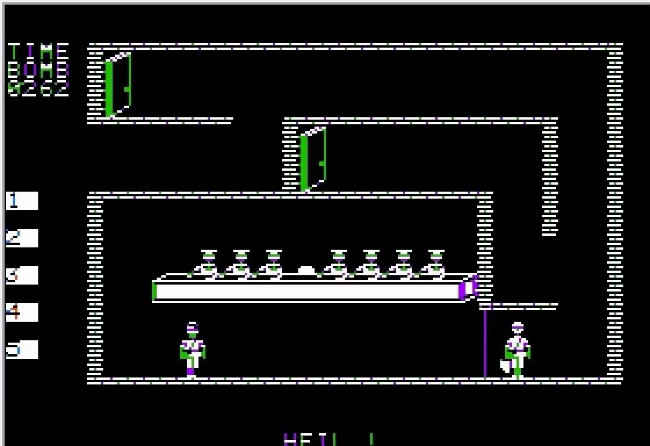
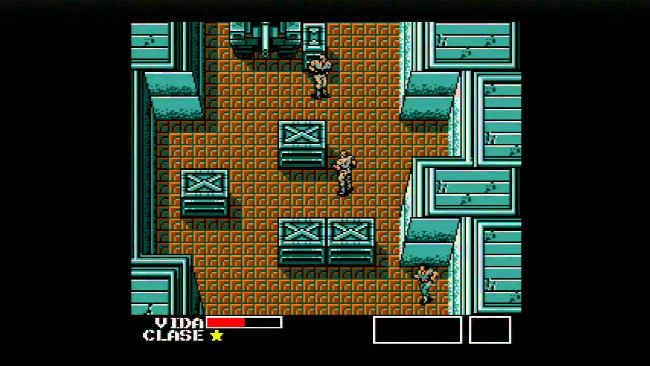

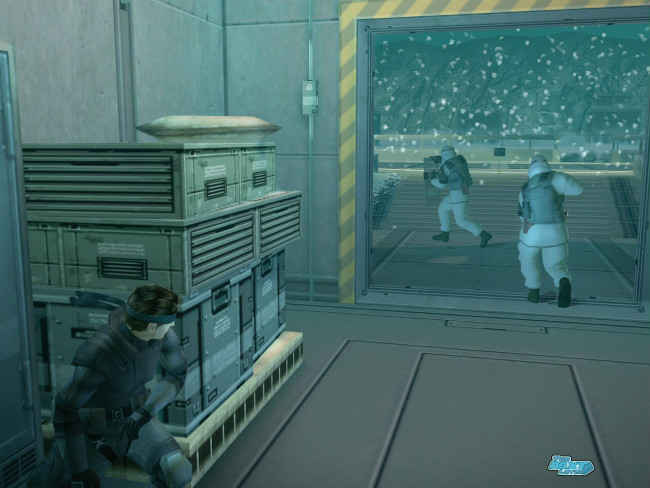
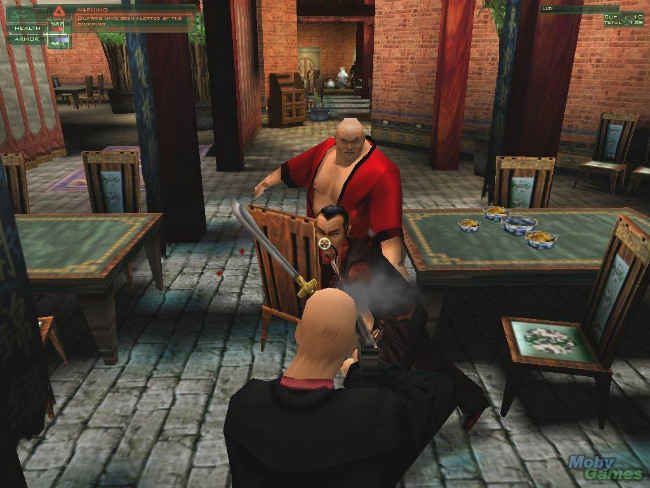
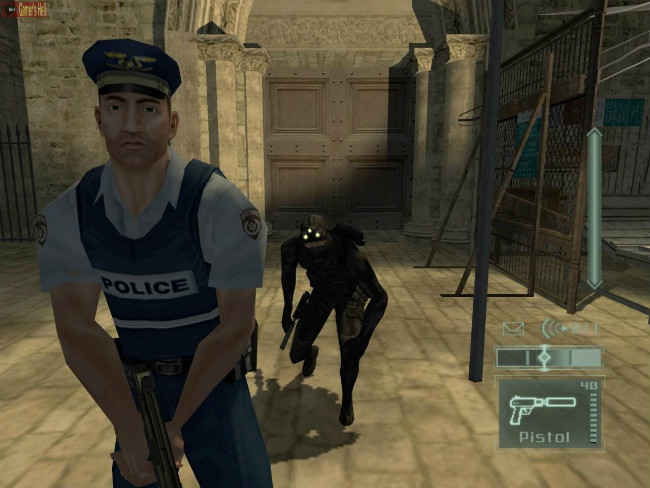
.jpg)
